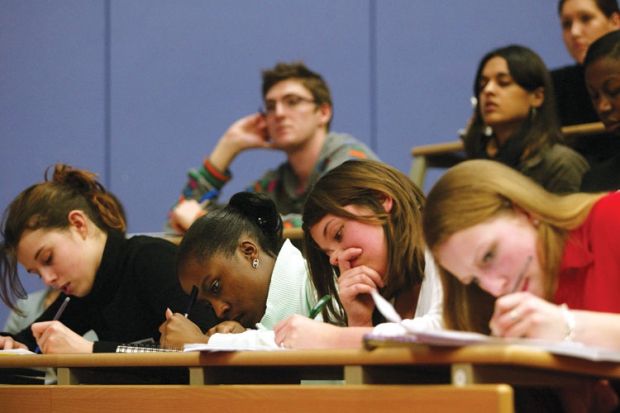Female students are better qualified than their male peers on nearly three-quarters of university courses, new data have shown, prompting a warning that girls may be spreading their efforts across too many A levels.
The figures suggest that although boys and girls on the same course have similar grades, female students have more qualifications.
The data, provided by the university guide BestCourse4Me, show that on 1,886 of 2,611 courses analysed, on average girls had more Ucas points in total than boys.
On 683 courses, boys had more Ucas points, and in 42 cases the two groups were equal.
In some cases, the difference was substantial. On almost one in four courses, the average Ucas point tally for boys was at least 10 per cent lower than for girls, while on 95 courses boys had 20 per cent fewer points.
However, the data also show that the average number of points per qualification – which roughly translates to grades – is much more equal.
Girls had better grades on half the courses, boys were ahead 46 per cent of the time and the two groups were equal in the remaining cases.
The results, which are for the academic year 2010-11 and which also show the gender split on each course (see PDF below), do not necessarily mean that universities are setting tougher admissions criteria for girls.
It may be that female applicants have more A levels than male ones, and so represent the cream of each course cohort, thus boosting girls’ average Ucas points.
In recent years girls have outperformed boys at A level, but until now it was unclear how this mismatch was translating into qualifications on university courses.
According to data from the Department for Education, girls achieved A‑level results that were 4 per cent better than those of boys in 2011 (when their qualifications are translated into Ucas points).
Alan Smithers, director of the Centre for Education and Employment Research at the University of Buckingham, said the data showed that universities were recruiting on the basis of “quality not quantity” and were “paying attention to grades in their core requirements rather than total Ucas points”.
“It seems that girls are more inclined to attempt as many A levels as possible,” he said.
“The pictures we see each August are of girls each with five or six top A‑level grades jumping for joy – I don’t recall seeing any similar pictures of boys in spite of them being marginally ahead at A*,” Professor Smithers said.
“As far as getting into the top universities, girls may [be] spreading their energies unnecessarily, but if they are taking more subjects because they value breadth then it is worth it to them,” he added.
A spokesman for Universities UK stressed that institutions did not decide who to admit on the basis of Ucas points alone.
“Another factor to consider is the different subjects being studied by men and women. There continues to be a gender bias in certain subjects,” he said. “However, it remains the case that girls continue to outperform boys at A levels in terms of the overall proportion of A to E grades being awarded, although the gap may be narrowing.”
